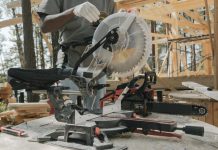
In 2018, a study found that 83% of Americans have ear piercings. This type of piercing is a great way to wear beautiful jewelry that’s up front and center.
In addition to having their ears pierced, some people take it a step further and gauge their ears. This is a practice where you stretch your piercings into large holes. As a result, you’re able to wear bold jewelry.
If you’d like to have gauged ears, then educate yourself first before starting. Otherwise, you’ll have a difficult time and may even suffer from infections and damage.
Here’s how to gauge ears safely.
Get the Right Tools for the Job
You might think that all you need is a set of different-sized plugs to put in your ears to stretch them out. But hold on, as you’ll need a few more things before you embark on your gauging journey.
Most importantly, you’ll need these two things: tapers and lubricant.
Tapers are a long and spiky type of jewelry for stretching your ears. They’re made of steel or acrylic; the former may be easier to use, but it’s more expensive. So if you’re on a budget, go for acrylic tapers, but make sure they’re still of good quality, as cheaper jewelry can irritate your skin.
Lubricant can help the tapers and plugs slide into your ear holes more easily and prevent tearing. Opt for plant-based lubricants, like jojoba and coconut oil. You can also buy commercial-grade lubricant from professional piercers or jewelry shops.
Also, you’ll need plugs or gauge earrings to put in after you’ve stretched your ears comfortably. You can choose from steel, titanium, and silicone materials, as well as organic ones (such as stone, glass, and wood).
It’s recommended that you start with a 16 or 14 gauge, which is the standard size for earlobe and cartilage piercings. Do note that as the sizes get bigger, the numbers get smaller, so an 8-gauge piercing is much bigger than a 16-gauge one.
Initial Ear Stretching
If you’ve recently gotten your ears pierced, then you’ll want to wait until they’re completely healed before starting the stretching process. This means that they’re no longer irritated, and there’s no discharge.
To make your earlobes more pliable, you’ll want to increase blood flow to the area. You can give them a massage, and/or take a shower/bath beforehand.
To ensure your ears stay clean and uninfected, wash your hands and sterilize all equipment with rubbing alcohol. Lubricate both the taper and your earlobes, then slowly push the taper through, with the pointy side entering first.
The most important thing is to take things slow and not to force anything. You should not feel any discomfort!
Put your plug on the other side of the taper. That way, as soon as the taper goes through, the plug fills in the hole.
Aftercare
It’s essential that you take care of your piercings after stretching. Otherwise, an infection can creep in and make you miserable.
While putting on/taking off clothes, and going about your day, be careful not to get anything caught on your piercings. Any irritation can delay your healing time.
Wash your piercings once a day with warm water and soap. Avoid using soap with chemicals, as they can irritate your skin. You should also soak your earlobes twice a day with warm salt water.
Again, to encourage blood flow to the area, massage your earlobes. Use the lubricant you have, and always wash your hands before massaging. On that note, resist the temptation to touch your piercings, as you might introduce bacteria into them.
If you notice your piercings smelling a little funky, don’t worry. This is normal since your body normally sheds dead skin, but it can’t since your plugs are blocking the way.
Upgrading Gauge Sizes
We can’t stress this enough: don’t rush stretching! After your starter ear gauge, you should wait at least six weeks before you stretch your ears again.
Keep a close eye on your earlobes. Even if you’ve waited six weeks, you shouldn’t stretch them if they’re still irritated, swollen, red, or oozing. It’s absolutely necessary for your ears to be fully healed before you stretch them again.
If you rush things, you can cause a “blowout”, which is when there’s scar tissue in your earlobe holes, which can then cause permanent scarring. Even worse is, you can accidentally tear your skin and/or tissue.
Signs of Infection
Despite taking good care of your piercings, there’s still a chance they might become infected. Here are the signs you should look out for:
- Swelling
- Pain
- Redness
- Bleeding
- Yellow or green discharge
- Fever
The first four might happen every once in a while, and may not indicate an infection. However, if you have colored discharge, fever, and even swelling in your lymph nodes, then it’s highly likely that your piercings are infected.
If you suspect that you have an infection, make an appointment with your doctor and stop all efforts to stretch your ears. A medical professional can examine you and prescribe antibiotics if needed so you can clear the infection.
Know How to Gauge Ears Safely and Effectively
By educating yourself on how to gauge ears properly, you’ll have an easier time. Not to mention, you’ll also decrease the chances of infections and damage to your ears.
So follow this guide carefully and don’t rush the process. It’s better to make no progress than to rush things and end up with no choice but to take your plugs out and have the holes close up.
Keep reading our blog page for more informative articles.












